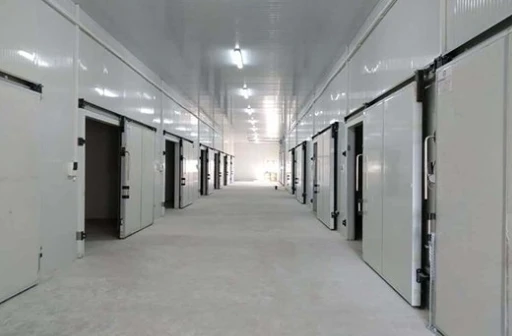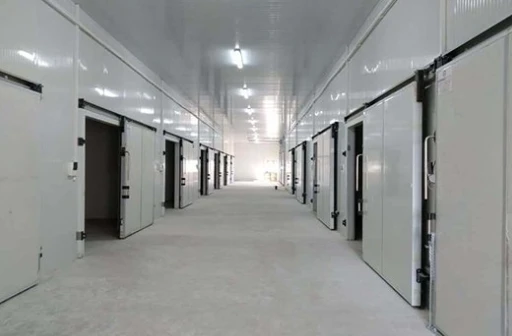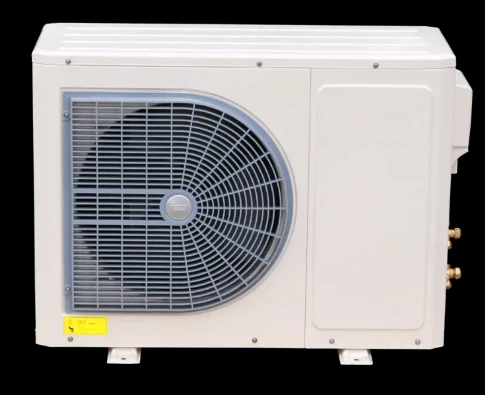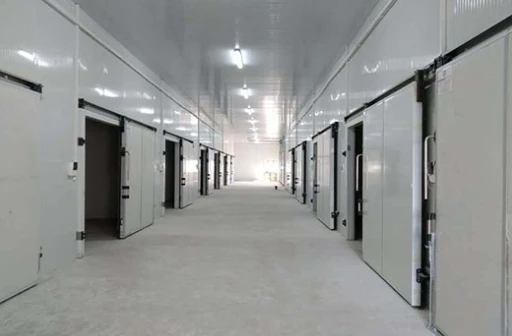Optimal Cold Storage for Potato & Onion - Extend Freshness
Strategic Importance of cold storage for potato and onion in Modern Agriculture and Logistics
The global agricultural sector faces immense challenges in minimizing post-harvest losses and ensuring food security. Potatoes and onions, fundamental staples across diverse cuisines and industries, are particularly susceptible to spoilage without proper post-harvest handling. Implementing advanced cold storage for potato and onion solutions is not merely a logistical consideration but a strategic imperative for extending shelf life, maintaining quality, and stabilizing market supply. This comprehensive guide delves into the technical intricacies, market dynamics, and operational advantages of modern cold storage systems designed specifically for these crucial crops.
Effective preservation through specialized potato cold storage can drastically reduce waste, preserve nutritional value, and empower producers to access broader markets, thereby enhancing profitability and sustainability across the agricultural value chain. Our solutions are engineered to address the unique physiological requirements of potatoes and onions, providing optimal environmental control.
Industry Trends and Market Demand for Perishable Produce Preservation
The demand for sophisticated cold chain solutions for agricultural produce is experiencing robust growth globally. Factors driving this trend include:
- Global Population Growth: Increasing pressure on food supply necessitates efficient preservation to feed a growing world.
- Supply Chain Optimization: Demand for year-round availability of fresh produce, regardless of seasonal harvest.
- Reduction of Food Waste: Post-harvest losses for potatoes can range from 10-30% without proper storage, while onions can face similar challenges. Effective potato cold storage room significantly mitigates these losses.
- Consumer Expectations: Higher standards for produce quality, appearance, and nutritional content.
- Regulatory Compliance: Stricter food safety and quality regulations (e.g., HACCP, FDA) emphasize controlled environments.
Market analysis indicates a compound annual growth rate (CAGR) for the global cold chain market for fruits and vegetables exceeding 9% from 2022 to 2027, driven by a greater emphasis on quality control and extended shelf life for products like potatoes and onions. This highlights the critical investment opportunities in reliable cold storage for potato and onion facilities.
Technical Specifications and Core Components of a Potato Cold Storage Solution
A high-performance potato cold storage room is an engineered system composed of several critical elements working in concert to maintain precise environmental conditions. Understanding these specifications is paramount for B2B decision-makers and agricultural engineers.
Key Components:
- Insulation Panels: Typically high-density polyurethane (PU) or polyisocyanurate (PIR) panels, ranging from 100mm to 200mm thickness, with a thermal conductivity (k-value) of approximately 0.023 W/(m·K). These panels are crucial for minimizing thermal bridges and maintaining a stable internal temperature.
- Refrigeration Units: Comprising compressors (hermetic, semi-hermetic, or screw types from leading brands like Bitzer, Copeland, Danfoss), condensers (air-cooled or water-cooled), and evaporators (efficient fin-tube designs). The choice of refrigerant (e.g., R404A, R507, R22 for legacy systems, or eco-friendly R290/R717) impacts efficiency and environmental footprint.
- Advanced Control Systems: PLC-based or microcomputer controllers (e.g., Carel, Danfoss) offering precise temperature (±0.5°C), humidity (±3%), and ventilation management. Features include data logging, remote monitoring, and alarm systems.
- Humidification Systems: Essential for preventing dehydration and weight loss in potatoes and onions. Ultrasonic humidifiers or high-pressure spray systems are often employed.
- Ventilation Systems: Forced air circulation systems with fans (e.g., axial or centrifugal) to ensure uniform temperature distribution and removal of ethylene gas (for potatoes) and other volatile compounds.
- Doors: Insulated swing, sliding, or roll-up doors with robust hardware and airtight seals to prevent cold air leakage.
Typical Product Specification Table: Potato Cold Storage Solution
| Parameter | Specification |
|---|---|
| Temperature Range (Potatoes) | +2°C to +4°C (short-term), +7°C to +10°C (long-term, for processing) |
| Temperature Range (Onions) | +0°C to +2°C |
| Humidity Range (Potatoes) | 85% - 95% RH |
| Humidity Range (Onions) | 65% - 70% RH (to prevent sprouting and rooting) |
| Insulation Panel Thickness | 100mm - 150mm PU/PIR (Density: 40-42 kg/m³) |
| Refrigeration System | Semi-hermetic compressor units (e.g., Bitzer, Copeland) |
| Control System | PLC-based with remote monitoring, data logging, alarm functions |
| Air Circulation | High-efficiency axial fans, 30-60 air changes per hour |
| Energy Efficiency Ratio (EER) | Typically 3.0 - 3.5+ for advanced systems |
| Service Life | 20+ years (with proper maintenance) |
Manufacturing Process and Quality Assurance for Cold Storage Systems
The construction of a reliable cold storage for potato and onion involves a meticulously controlled process, ensuring durability, energy efficiency, and operational integrity. Our commitment to excellence is reflected in every stage, from material selection to final testing.
Process Flow:
- Design and Engineering: Utilizing CAD/CAM software for precise structural and thermal modeling. Designs adhere to international standards like ASHRAE, ISO 23953 (Refrigerated display cabinets), and local building codes.
- Material Procurement: Sourcing high-grade materials. For insulation panels, pre-painted galvanized iron (PPGI) or stainless steel sheets encase fire-retardant polyurethane foam, manufactured through continuous lamination. Refrigeration components are procured from certified global leaders.
- Panel Manufacturing: Automated production lines create interlocking tongue-and-groove or cam-lock panels. The foaming process ensures uniform density and adhesion, minimizing voids. Panel thickness, flatness, and dimensional accuracy are strictly controlled via CNC machining.
- Refrigeration Unit Assembly: Compressors, condensers, evaporators, and control valves are assembled on robust frames. Brazing operations adhere to ANSI/AWS A5.8 standards for leak-proof connections. All electrical wiring conforms to IEC standards.
- Pre-assembly & Testing: Components undergo rigorous individual testing. Compressors are tested for performance under various load conditions, and control systems are pre-calibrated. Insulation panels are spot-checked for thermal resistance (R-value).
- Installation & Commissioning: On-site assembly of modular panels, sealing, and installation of refrigeration piping and electrical systems. Commissioning involves leak detection, vacuum evacuation, refrigerant charging, and extensive operational testing.
- Performance Validation: Post-installation, the entire potato cold storage system undergoes a series of performance tests to verify temperature pull-down rates, stability, humidity control, and energy consumption against design specifications.
Testing Standards and Certifications:
Our manufacturing processes comply with ISO 9001:2015 quality management systems. Key components meet CE, UL, and PED directives. Pressure vessels and piping are designed and tested according to ASME codes. This commitment ensures a service life often exceeding 20 years, even in demanding agricultural environments.
Advantages in Target Industries:
Primarily serving the agricultural and food processing sectors, our cold storage solutions offer significant advantages:
- Energy Saving: Superior insulation and high-efficiency refrigeration units reduce operational costs by up to 30% compared to conventional systems.
- Corrosion Resistance: Use of PPGI, stainless steel, and powder-coated components ensures longevity in humid environments typical of produce storage.
- Modular Design: Facilitates rapid installation and future expansion, minimizing disruption to operations.

Application Scenarios for Efficient Potato and Onion Storage
The versatility of our cold storage solutions caters to a wide spectrum of B2B applications, ensuring optimal conditions for storing potatoes in cold room and onions across various stages of the supply chain.
- Agricultural Farms and Cooperatives: Large-scale farmers utilize these facilities immediately post-harvest to prevent spoilage and store produce until market prices are favorable or for phased distribution. This minimizes losses from premature sprouting, rotting, or dehydration.
- Food Processing Plants: Potatoes and onions are key ingredients in countless processed foods. Cold storage ensures a consistent supply of quality raw materials, maintaining the integrity and flavor profile required for chips, frozen foods, dehydrated products, and canned goods.
- Wholesale Markets and Distribution Centers: These hubs rely on efficient potato cold storage to manage inventory, consolidate shipments, and extend the marketing window for fresh produce before onward distribution to retailers.
- Supermarkets and Retail Chains: For large retail operations, smaller, decentralized cold rooms ensure that produce remains fresh on shelves, reducing shrinkage and enhancing customer satisfaction.
- Seed Storage: Specialized cold rooms with precise temperature and humidity control are critical for preserving potato and onion seeds for future planting cycles, ensuring viability and genetic integrity.
Each scenario benefits from the tailored environmental conditions that our advanced systems provide, directly impacting product quality, marketability, and overall profitability.
Technical Advantages of Our Cold Storage Solutions
Our cold storage for potato and onion systems deliver a suite of technical advantages designed to optimize performance and return on investment for our clients.
- Precision Environmental Control: Sophisticated sensors and PID (Proportional-Integral-Derivative) controllers maintain temperature within ±0.5°C and humidity within ±3% RH, critical for specific potato and onion varieties. This prevents premature sprouting, rooting, and reduces weight loss due to desiccation.
- Superior Energy Efficiency: Employing high-R-value insulation, variable speed drive (VSD) compressors, and intelligent defrost cycles, our systems achieve significant energy savings, often exceeding industry benchmarks. This directly translates to lower operational expenditures (OPEX).
- Enhanced Air Quality Management: Integrated ventilation and air purification systems actively remove ethylene gas (a ripening hormone for potatoes) and other volatile organic compounds (VOCs), crucial for extending dormancy and preventing off-flavors. CO2 monitoring and control are also available.
- Robust Durability and Longevity: Constructed with high-grade, food-safe materials (e.g., stainless steel, galvanized steel with anti-corrosion coatings) and industrial-strength components, our cold rooms are built to withstand the rigorous demands of agricultural environments for decades.
- Scalability and Modularity: Our modular panel construction allows for flexible sizing and future expansion, ensuring that the cold storage can adapt to growing business needs without extensive rebuilds.
- Smart Monitoring and Remote Management: IoT-enabled control panels provide real-time data on temperature, humidity, and energy consumption. Remote access via web or mobile applications allows for proactive adjustments and immediate alerts in case of anomalies, minimizing downtime and potential losses.

Vendor Comparison: Selecting the Right Potato Cold Storage Partner
Choosing a vendor for cold storage for potato and onion is a critical decision impacting long-term operational efficiency and profitability. A thorough comparison based on key performance indicators (KPIs) and service offerings is essential.
Comparison Table: Leading Cold Storage Providers
| Feature/Vendor | Our Solution (XX Cold Room) | Competitor A (Premium) | Competitor B (Value) |
|---|---|---|---|
| Temperature Precision | ±0.5°C | ±0.2°C (often higher cost) | ±1.0°C |
| Humidity Control Range | 60-95% RH (±3%) | 50-98% RH (±2%) | 70-90% RH (±5%) |
| Energy Efficiency (EER) | 3.0 - 3.5+ | 3.2 - 3.8+ | 2.5 - 3.0 |
| Control System | PLC with IoT remote monitoring | Advanced AI-driven with predictive maintenance | Basic digital controller |
| Insulation Material | High-density PU/PIR (100-150mm) | Premium PIR (120-200mm) | EPS/PU (80-120mm) |
| Warranty (Compressor) | 2 Years | 3-5 Years | 1 Year |
| After-Sales Support | 24/7 Phone/Email, On-site (local partners) | Dedicated Key Account Manager, Global On-site | Standard Business Hours, Limited On-site |
Our solutions offer a robust balance of advanced technology, energy efficiency, and cost-effectiveness, positioning us as a highly competitive option for businesses seeking reliable potato cold storage room systems without compromising on critical performance metrics. We prioritize proven technology and comprehensive support to ensure optimal long-term value.
Customized Solutions for Diverse Agricultural Needs
Recognizing that no two agricultural operations are identical, we specialize in providing bespoke cold storage for potato and onion solutions. Our approach ensures that each system is perfectly aligned with the client's specific requirements, from capacity and climate to crop type and operational workflow.
- Capacity Scalability: Whether you require a small potato cold storage unit for a family farm or a multi-thousand-ton facility for a large cooperative, our modular designs allow for precise sizing and future expansion.
- Climate-Specific Design: We engineer systems to perform optimally in various ambient conditions, from tropical humidity to arid continental climates, ensuring consistent internal environments regardless of external factors. This includes tailored insulation thicknesses and refrigeration capacities.
- Crop-Specific Environments: Different potato varieties (e.g., russet, red, yellow) and onion types (yellow, red, white) have distinct storage requirements. Our control systems can be programmed to manage precise temperature and humidity profiles for each, optimizing sprout inhibition and dormancy.
- Layout and Integration: We design the cold room layout to integrate seamlessly with existing infrastructure, including loading docks, sorting lines, and packaging areas. This includes considerations for pallet racking, bulk storage, and appropriate access points.
- Energy Optimization: Customized energy audits and simulations help design the most energy-efficient system, factoring in local electricity costs, solar integration possibilities, and demand-side management strategies.
Our engineering team collaborates closely with clients through detailed consultation, site assessment, and 3D modeling to ensure the final solution is not only technically superior but also operationally efficient and financially viable.

Application Case Studies and Customer Success Stories
Our commitment to delivering high-performance cold storage for potato and onion solutions is underscored by numerous successful implementations across various scales and geographies.
Case Study 1: Large-Scale Agricultural Cooperative, Midwest USA
Challenge: A cooperative managing over 5,000 acres of potato crops faced significant post-harvest losses and limited market access due to inadequate storage infrastructure, particularly for long-term storing potatoes in cold room intended for processing.
Solution: We designed and installed a 10,000-ton capacity cold storage facility, segmented into five individual rooms with independent temperature and humidity controls. The system incorporated state-of-the-art PLC automation, VSD compressors, and enhanced ventilation for ethylene management.
Results: The cooperative reported a 25% reduction in spoilage and weight loss, extending their market window by an average of 4 months. Energy costs were 30% lower than their previous conventional storage, leading to an estimated ROI in under 4 years. "The precision control has been a game-changer for our Russet Burbank potatoes," commented the operations manager. "We've seen unprecedented quality retention and a significant boost to our profitability."
Case Study 2: Onion Processing Plant, Southern Europe
Challenge: An onion dehydration and processing plant required a consistent supply of raw onions year-round, but existing ambient storage led to high spoilage rates, particularly sprouting and fungal infections, during warmer months.
Solution: We implemented a 5,000 m³ cold storage room optimized for onion storage, maintaining temperatures at +1°C and humidity at 68% RH. The system featured desiccant dehumidifiers and forced air circulation to prevent moisture buildup and sprouting.
Results: Post-harvest losses were reduced from 18% to less than 5%. The consistent supply of high-quality onions enabled the plant to operate at full capacity year-round, increasing production by 15%. "The stability our new cold storage provides is invaluable," stated the plant director. "Our raw material quality has never been better, and our production line runs smoothly, without seasonal interruptions."
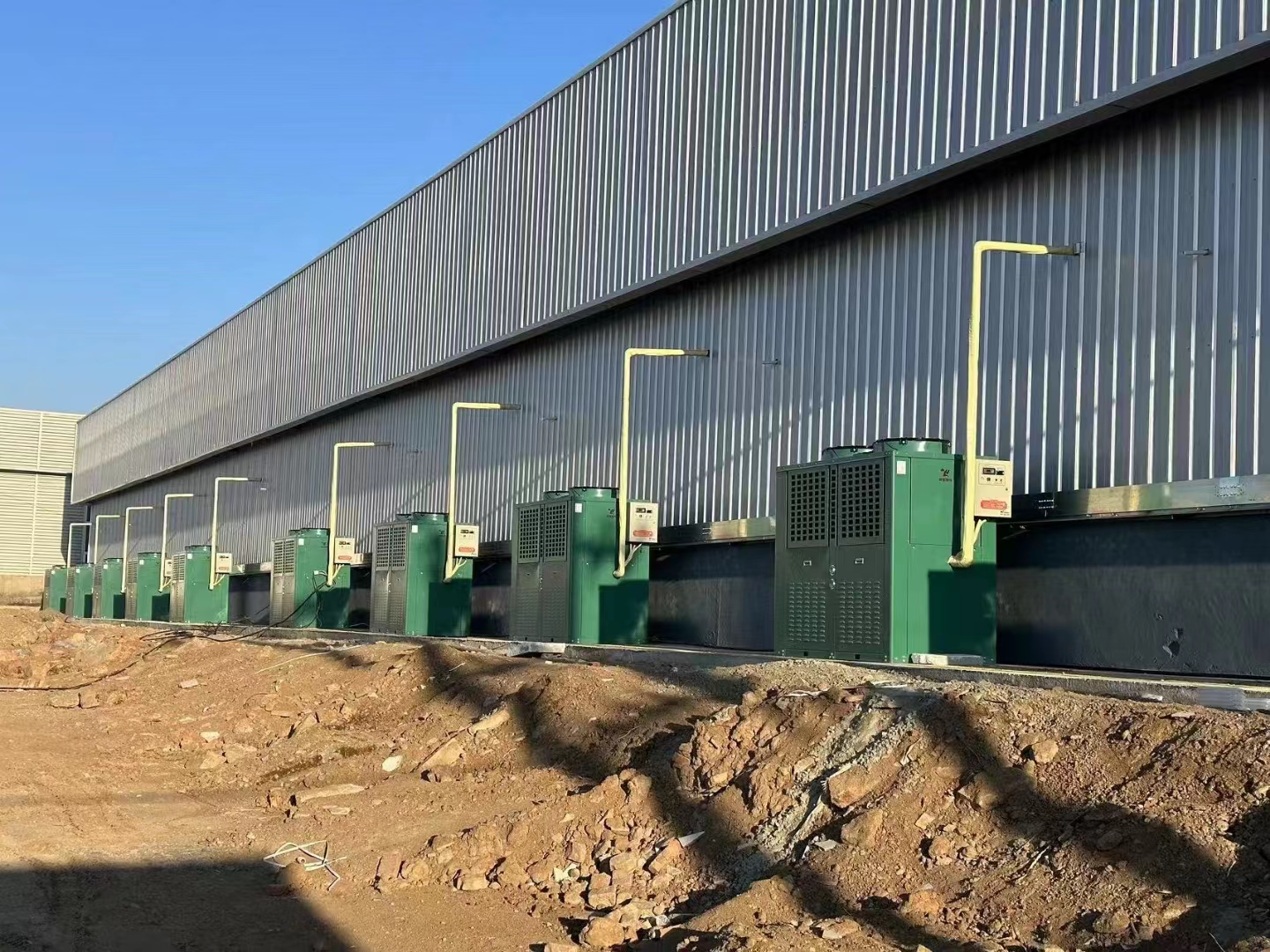
Commitment to Trustworthiness: Certifications, Warranties, and Support
Building trust is fundamental to our B2B relationships. We achieve this through transparent operations, robust quality assurances, and unwavering customer support.
Certifications and Compliance:
- ISO 9001:2015 Certified: Our manufacturing and project management processes adhere to stringent international quality management standards.
- CE Marking: All our refrigeration units and control systems comply with European safety, health, and environmental protection requirements.
- Food Safety Compliance: Materials and components used in our cold rooms are selected to meet food-grade standards, facilitating HACCP and FDA compliance for our clients.
Warranty and Guarantees:
We stand behind the quality of our cold storage for potato and onion solutions with comprehensive warranties:
- Structural Warranty: 5-year warranty on insulated panels against manufacturing defects and thermal degradation.
- Refrigeration Components Warranty: 2-year warranty on compressors, condensers, and evaporators, subject to regular maintenance as per manufacturer guidelines.
- System Performance Guarantee: We guarantee the system will meet the agreed-upon temperature and humidity specifications upon successful commissioning.
Lead Time and Fulfillment:
Typical lead times for our standard potato cold storage solutions range from 8 to 12 weeks from contract signing to factory shipment, depending on customization and project complexity. On-site installation and commissioning usually take an additional 2 to 4 weeks, facilitated by our modular design and experienced technical teams.
After-Sales Support and Maintenance:
Our commitment extends beyond installation. We offer:
- 24/7 Technical Support: Dedicated helplines and remote diagnostic services for immediate assistance.
- Preventative Maintenance Programs: Tailored service contracts to ensure optimal system performance and longevity.
- Spare Parts Availability: A readily available inventory of critical spare parts to minimize downtime.
- Training: Comprehensive training for client staff on system operation and basic maintenance.
Frequently Asked Questions (FAQs)
Conclusion
The sophisticated engineering behind modern cold storage for potato and onion is indispensable for safeguarding agricultural investments, minimizing waste, and ensuring a stable, high-quality supply of these vital crops. By combining precision environmental control, energy-efficient design, and robust construction, our solutions empower B2B clients to optimize their supply chains, enhance product marketability, and achieve sustainable growth. Partner with us to leverage cutting-edge technology and expertise for your perishable goods storage needs.
References
- FAO, The State of Food and Agriculture 2021: Making agri-food systems more resilient to shocks and stresses. Rome.
- ASHRAE Handbook - Refrigeration, Chapter 22: Vegetables. American Society of Heating, Refrigerating and Air-Conditioning Engineers, 2022.
- USDA Agricultural Research Service, "Storage of Potatoes and Onions." Postharvest Technology Research Unit, 2021.
- Global Cold Chain Alliance (GCCA) - Industry Best Practices Guide, 2023.
- International Organization for Standardization (ISO) 9001:2015 - Quality management systems.



